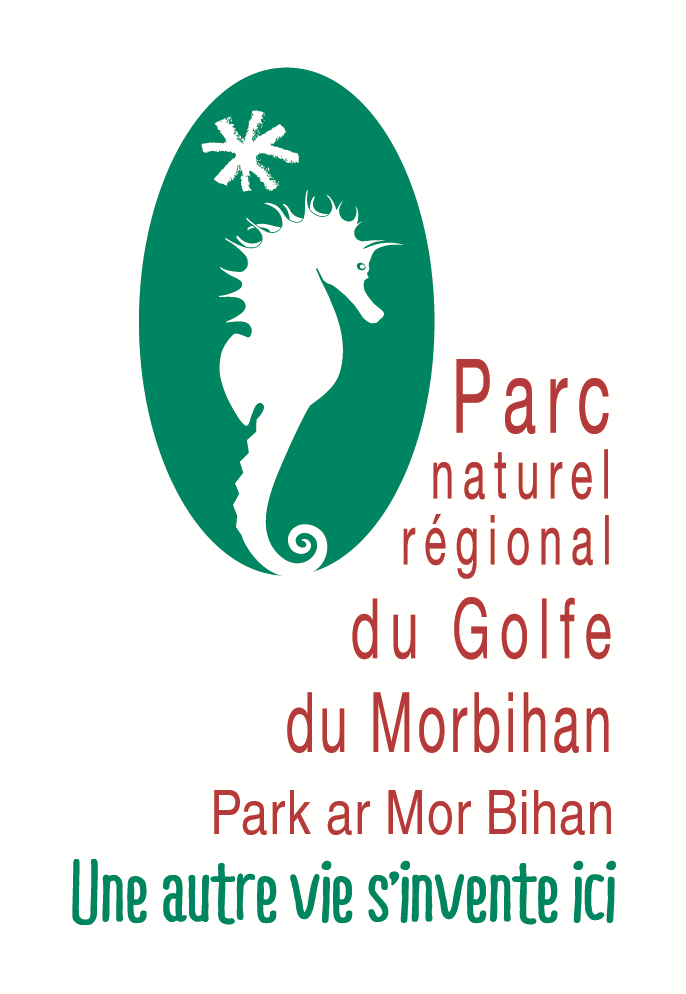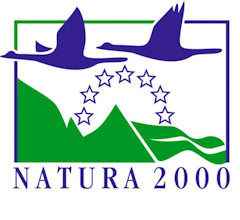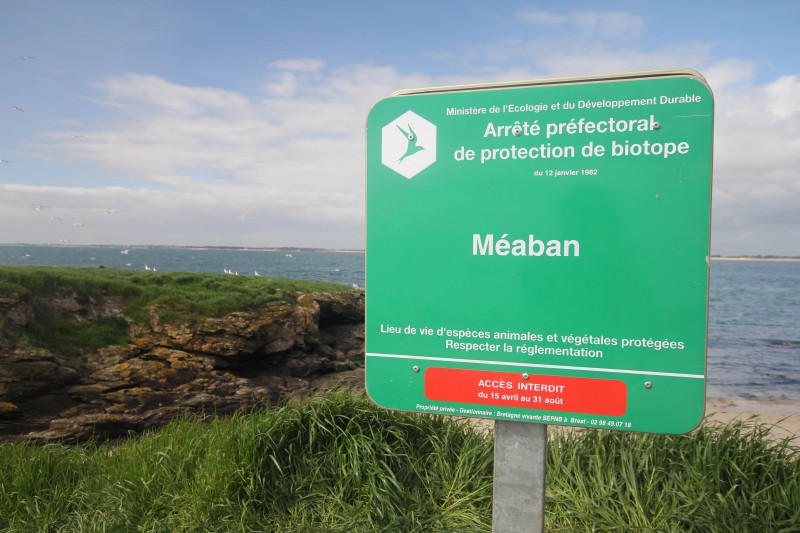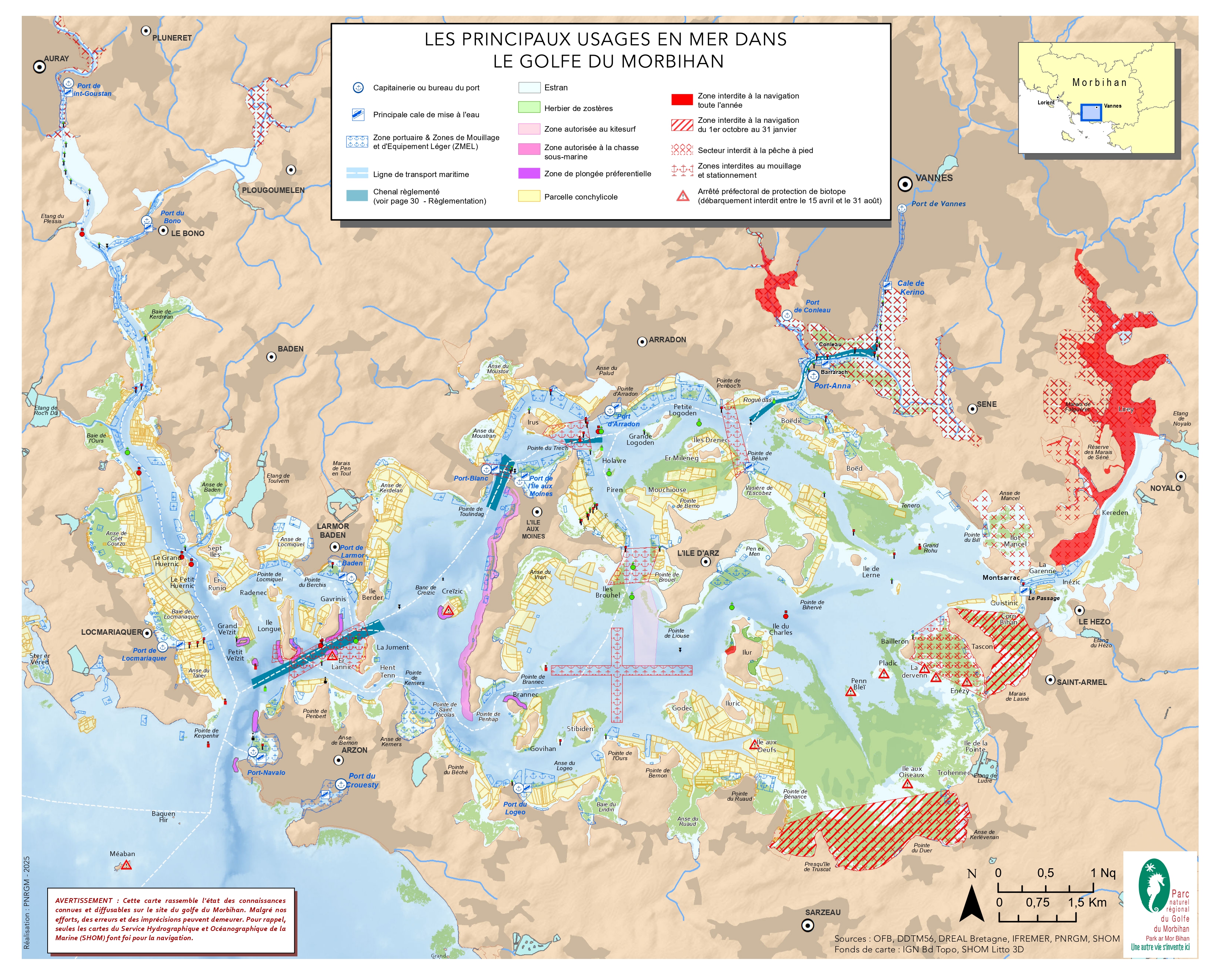
The Gulf of Morbihan, an exceptional natural heritage
The “little sea” offers an exceptional sailing environment for participants and visitors to the “Semaine du Golfe du Morbihan”. The beauty of its landscapes is the reflection of a rich and preserved natural heritage, which justifies its classification as a “Regional Natural Park” and the implementation of various protection tools.
“The Gulf of Morbihan, an area of sustainable development"
 |
A Regional Nature Park is an inhabited territory, recognized at national level for its strong heritage and landscape values, which is organized around a concerted sustainable development project. It is classified by decree of the Prime Minister for a period of 15 years.
The Golfe du Morbihan Regional Nature Park was created by decree on October 04, 2014 becoming the 2nd Regional Nature Park in Brittany and the 50th in France. The Golfe du Morbihan RNP responds to the need to preserve and enhance the exceptional but fragile natural and cultural heritage of the Golfe du Morbihan territory. With this in mind, the local authorities (35 communes, 4 communities of communes and agglomerations, the Département du Morbihan and the Région Bretagne) approved the first charter of the Regional Natural Park, which outlines the territory's project until 2029. The charter focuses on 3 key areas:
-
Axis 1: Make the region's heritage an asset;
-
Axis 2: Ensure sustainable development for the region;
-
Axis 3: Put people at the heart of the territory's project.
The actions of the Parc Naturel Régional du Golfe du Morbihan cover a wide range of areas, including integrated management of coastal zones and watersheds, biodiversity and landscape monitoring, adaptation to climate change, and promotion of intangible cultural heritage.
The Gulf of Morbihan, a "Natura 2000" area
 |
The European “Natura 2000” network comprises a series of natural and semi-natural sites on land and at sea within the European Union. The main aim of this network is to conserve habitats and species of Community interest, while taking into account economic, social, cultural and regional requirements.
The Gulf of Morbihan is covered by two Natura 2000 areas:
-
The “Golfe du Morbihan, côte ouest de Rhuys” Special Area of Conservation, designated by ministerial decree on May 04, 2007 under the “Habitats, Fauna and Flora” Directive, with the aim of maintaining certain natural habitats (e.g. dunes, moors, salt meadows, rocky bottoms) and endangered species (e.g. European otter) in a good state of conservation;
-
The “Golfe du Morbihan” Special Protection Area, designated by ministerial decree on October 31, 2008 (sea extension) under the Birds Directive, and aimed at conserving bird species and their feeding and breeding habitats (e.g. Brent Goose, Common Tern, Elegant Avocet).
 |
The French government has entrusted the Parc Naturel Régional du Golfe du Morbihan, in partnership with the Office Français de la Biodiversité, with the role of operator for the implementation of actions aimed at achieving these biodiversity preservation objectives.
The Gulf of Morbihan, a protected area
A hunting and wildlife reserve is an area where hunting is regulated. National reserves are distinguished by their large size, regular monitoring and the existence of a management committee.
The Golfe du Morbihan National Hunting and Wildlife Reserve was created on January 16, 2008 by ministerial decree. It covers a large part of the Gulf's public maritime domain. The Office Français de la Biodiversité is the state-appointed manager. Its aim is to maintain the attractiveness of the site for birds by preserving their tranquility and the quality of their habitats.
A national nature reserve is an area where the conservation of the natural heritage is of particular importance, or where it is necessary to protect it from any artificial intervention likely to damage it. The decision to classify a national nature reserve is taken by ministerial decree. This classification may be subject to special regulations.
The Réserve Naturelle des Marais de Séné was created by decree on August 23, 1996, and covers 530 hectares. The State has entrusted the management of the reserve to three managers: the commune of Séné, the association Bretagne Vivante and the Amicale de chasse de Séné. The aim of the management set up on the nature reserve is to ensure the conservation and restoration of the natural heritage that justified its creation (e.g. bird nesting). Part of the reserve has been equipped to welcome the public: wooden paths, platforms and observatories.
An Arrêté Préfectoral de Protection de Biotope (Prefectoral Biotope Protection Order) is a decree issued by the Prefect of a département to protect a natural habitat or biotope that is home to one or more protected wild animal and/or plant species.
The Arrêté Préfectoral de Protection de Biotope des îles et îlots du Golfe du Morbihan (Prefectoral Biotope Protection Order for the islands and islets of the Gulf of Morbihan), dated January 12 1982, aims to protect the large bird populations nesting on the islands and islets of Morbihan from disturbance (landing of aircraft). It prohibits access to the terrestrial parts of certain islands and islets from April 15 to August 31. In the Gulf of Morbihan, these regulations concern: Creizic, La Dervernn, Pladic, Le Cothy, Enezy, l'Île aux Oiseaux, l'Île aux Œufs, Pen Ar Bleiz, Er Lannic and the island of Méaban.
With this in mind, and in order to respect the rich environment of this protected site, the event organizers have been working since 2009 in consultation with the organizations in charge of preserving the site and those involved in environmental protection. The nautical and festive programs are designed with these issues in mind, and the emphasis is placed on raising awareness among crews and visitors alike.
Bird protection
 |
|
Quand vous voyez ce panneau, ne débarquez pas sur l'île ! |
The Semaine du Golfe du Morbihan takes place in May, at the start of the bird nesting season. In accordance with current regulations (see section “Arrêté Préfectoral de Protection de Biotope des îles et îlots du Golfe du Morbihan”), during the Semaine du Golfe event, landings on the terrestrial parts of certain islets are prohibited. In addition, other islands not originally targeted by this regulation are now home to large colonies of birds (Hen Tenn, Govihan, Reno or Drennec).
In 2015, a team of volunteers from the Canoe Kayak Club de Vannes (CKCV) volunteered to watch over the most sensitive islets on Saturday, the day of the Grande Parade. Trained by the Bretagne Vivante association and the ONCFS, the team took to the sensitive areas by kayak to prevent untimely landings and raise visitor awareness. It will be activated again this year.
To find out more: click here!
Protecting natural habitats
 |
The Gulf of Morbihan boasts a remarkable diversity of natural coastal and marine habitats, most of which are rare and fragile, and classified as being of Community interest under Natura 2000.
The seabed of the Gulf of Morbihan is home to the second largest collection of eelgrass beds in France. Eelgrass is not a seaweed, but a flowering plant that lives on sandy-muddy seabeds. Two species are present in the Gulf: eelgrass (permanently submerged) and dwarf eelgrass (in the tidal range). With their leaves, eelgrass forms a veritable canopy that supports numerous species. They provide refuge and breeding grounds for numerous heritage and commercial species (seahorses, cuttlefish, sea bass, etc.).
They are also sources of food for certain bird species that winter in the Gulf, such as the Brent Goose. Last but not least, they play a key role in sediment fixation. Eelgrass plants are sensitive to environmental conditions and to the various pressures to which they may be subjected (trampling, uprooting, burial, etc.).
Find out more: Valmer project
Best practices to limit your impact at anchor
-
Choose weed-free areas for anchoring (these areas are clearer when viewed from the boat), download the weed map.
-
Use a mooring line (a rope attached to a surface buoy and hooked to the anchor head) to raise the anchor without ploughing the seabed.
-
CAP SUR LA PETITE MER, download the best practices guide
The Atlantic coastal fringe of the Golfe du Morbihan boasts characteristic environments of great heritage value.
These include the whole succession of dune environments typical of sandy coastlines. Each type of dune has its own rich and specialized flora. Indeed, the highly mobile sand, lacking reserves and fresh water, forces plants to make special adaptations (root hairs, habit, resistance to burial, succulence, etc.). Insects, gastropods, amphibians, reptiles and birds also find favorable biotopes for all or part of their life cycle. A distinction is made between the embryonic dune, the first stage of sand accumulation in the process of forming a dune belt, with sparse vegetation and where the sand remains highly mobilizable by the wind; the mobile dune (or white dune), where a significant accumulation of sand is formed thanks to the action of plants such as Oyat, which retain the sand thanks to their highly-developed root system; and finally the fixed dune (or grey dune), where mosses and lichens develop sheltered from sea spray.
On rocky promontories, another highly specialized plant community develops in the form of lawns. These lawns are under the influence of sea spray, hence their name “aerhaline lawns” (i.e. tolerant of air salinity).
All these habitats can contain rare and protected species of flora. They are also highly sensitive to trampling. This leads to rapid degradation of the vegetation cover and thus encourages erosion, as sediments are no longer trapped by the vegetation.
NAV&CO / Free application for boaters
This mobile application allows users to discover the biodiversity of places to get away from it all on the SHOM's nautical charts, and informs sailors when they have entered a marine protected area, as well as areas subject to environmental regulations. Collaboration between SHOM and the French Biodiversity Office (OFB).

Best practices for limiting the impact of your outings
-
Follow marked paths and respect vegetation protection devices. Particularly on the sites of the Conservatoire du littoral and the Espaces Naturels Sensibles of the Conseil Départemental du Morbihan.
-
Download the coastal footpath guide
Last but not least, a waste sorting and management system, as well as an awareness-raising program for participants and visitors, round off the various steps taken to ensure a clean and ecologically responsible event, thanks to the support of the two local authorities represented (Golfe du Morbihan Vannes agglomération, Auray Quiberon Terre Atlantique) and Sysem.



























